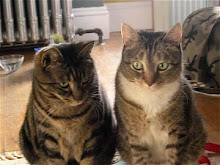We began the semester with various definitions of illustration. Illustration, we discovered, requires a context, or a setting in which ideas are couched and directed, an audience is considered, and the format, materials, and methods support and further the transformation of mere representation to a visual language that communicates its message cogently and moves beyond aesthetics or pure expression. The visual piece must translate well or the illustration fails. It cannot be only a thing of beauty or enigmatic phrasing of something.
Illustration has always had a distinct purpose to reach its specific audience, and language persuasion, point of view, narrative, or instructive information. Illustration is by all means a people's art, which records histories, shares a commentary about what those histories are made of and from whence they come, and will endure as evidence of the multiplicity of our humanity.
Most recently, we looked at the earliest influences and origins of American illustration from the Lascaux cave walls to petroglyphs in the Southwest, from the Puritans to the early American colonialists, who settled this country and who in those days came primarily from Northern countries like England, Germany, Switzerland, and Holland, ( cold and unforgiving climes), so we can better understand why illustration in America is what it is currently and what those beginnings mean for us still to this day. Those Puritanical origins set the tone for how we would identify ourselves, depict the world, and paint. It also invited challenges by artists like Thomas Eakins, or the mythologizing of Frederick Remington, whose works create a foundation for the genres of realism and the Western, which still influence the discourses of culture and identity today.
We are in the process of researching artists whose impact on ideas and perception has been most notable, such as Goya or Howard Pyle, Philip Guston or others, who engage in a a process of unraveling themselves and humanity through drawing. These critical approaches are important to contextualize illustration and its link to concepts, its origins in the most primal of responses and always attached to changes in technology and methods. Each student has been researching other artists on their own, by looking at books in the library and making further inquiries through thinking, writing, and other research.
A few weeks ago, we viewed four videos of artists from the Art21 PBS series: Kara Walker, Terence Hancock-Doyle, Kerry James Marshall and Walton Ford, all who use drawing in their work. We were struck in conversation afterwards by how these artists all make comments about the freedoms they experienced in childhood, which they return to through the use of certain materials like collage or crayons, or the approach, as in more spontaneous open-ended creations to become more connected with the work. They value experience, memory, and the opportunity art affords to explore imagination, tensions between realities, as well as, potential and failure.
These artists address identity, challenge the norms of what is expected, and at the same time could be seen as complicit in artworld systems, which rely on hierarchies of preference and privilege. We are hoping to expand this discussion as we move into dialogues about Persepolis, zines, and collaborate on a joint project and workshop with the Print Department this week and next. Stay tuned!

No comments:
Post a Comment